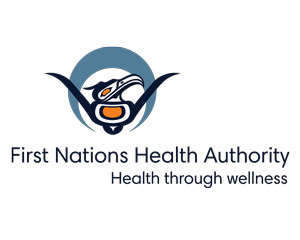People with disabilities often face unique barriers compared to those without disabilities, which is why the First Nations Health Authority (FNHA) is highlighting November as First Nations Disability Awareness Month. The awareness month was started by the Native Disability Association of Canada, formerly known as the British Columbia Native Disability Network Association.
This is an opportunity to raise awareness of the barriers and challenges faced by Indigenous people living with disabilities, but also to celebrate their strength and resilience and the good work being done to improve accessibility.
Statistics show that in Canada, Indigenous people have a higher rate of disability than the general population. There are many factors that contribute to this, but colonialism and the unequal access to comprehensive healthcare that many Indigenous people face are major contributing factors. According to one academic paper, Indigenous people living with a disability are “doubly disadvantaged” by Indigenous discrimination and disability-related discrimination. This does not take into account other intersectional identities that may add an additional layer of discrimination, such as age, gender identity, and sexual orientation.
The word “disability” itself is a colonial and social construct that implies that a person cannot do something. That definition is different from how many Indigenous cultures view people with “disabilities.” Many Indigenous languages do not even have a word that translates to “disability.” Rather than viewing disability in terms of what a person cannot do, many Indigenous people, families and communities focus on a person’s strengths, talents and positive contributions to their community.
Accessibility is a broad term, but it is important to talk about in order to ensure that everyone, regardless of ability, has a successful community. Part of accessibility means that people have access to services for health and wellness. This can be a big barrier for people with disabilities who have more difficulty receiving the services they need. This is especially felt in rural and remote communities where awareness and resources may not be as available. Accessibility also means that people can freely enter, exit, and move within buildings and environments such as community buildings, public parks, health centers, and their own homes. This can include things like wheelchair ramps and accessible restrooms, but also things like proper lighting, noise levels, and support for people with visual and hearing impairments. Accessibility can also refer to how emotionally safe a person feels when entering a space, and whether they feel welcomed, supported, and safe enough to return. Additionally, this can also mean whether they can participate in cultural traditions such as teachings about harvesting food or access to medicines on the land. These are just a few of the many examples of what accessibility means.
One thing to reflect on during Indigenous Disability Awareness Month is that accessibility is for everyone, not just people with disabilities, and it means many different things to different people. To raise awareness, FNHA is conducting a research project to determine what accessibility means to Indigenous people in BC. This project is an opportunity to talk about accessibility and discuss how services, organizations and policies can be improved. The results of the project will not only raise awareness and demonstrate the diversity of the topic, but will also be used by FNHA to guide its approach to align with British Columbia’s Accessibility Act and ensure that our work is rooted in the voices of Indigenous people in BC who experience disability. This means listening to stories from Indigenous people, families and communities about what accessibility means to them, providing insights on how to improve accessibility plans, policies and guidelines.
Accessibility and reducing barriers is something FNHA is committed to implementing in our Metro Vancouver office project. The project is designed to the Rick Hansen Gold Level Accessibility Standard, a national rating system that measures and certifies the level of meaningful accessibility of buildings and grounds. FNHA is also required under British Columbia accessibility regulations to meet accessibility requirements by September 1, 2024. Our goal is to not only meet but exceed these requirements and work toward a fully accessible organization. Updates on this effort will be shared in the coming months.
Patrick Alec (Xwaluputhut) is from the Stz’uminus First Nation and Penelakut Island. He is a drummer, motivational speaker and project advisor for the BC First Nations Accessibility Research Project. He has cerebral palsy. Patrick says accessibility isn’t just about having access, it’s about being aware.
“Accessibility is about seeing people with disabilities. Visibility comes before accessibility. I think Indigenous Disability Awareness Month is about visibility. We need to talk about the barriers and challenges we face as Indigenous people with disabilities, but more importantly, we need to talk about the strengths and gifts that we have in our community.”
resource:
The British Columbia Aboriginal Disability Network Association provides many disability resources at this link, and is a good place to find out more information, from assistance to education to employment.

